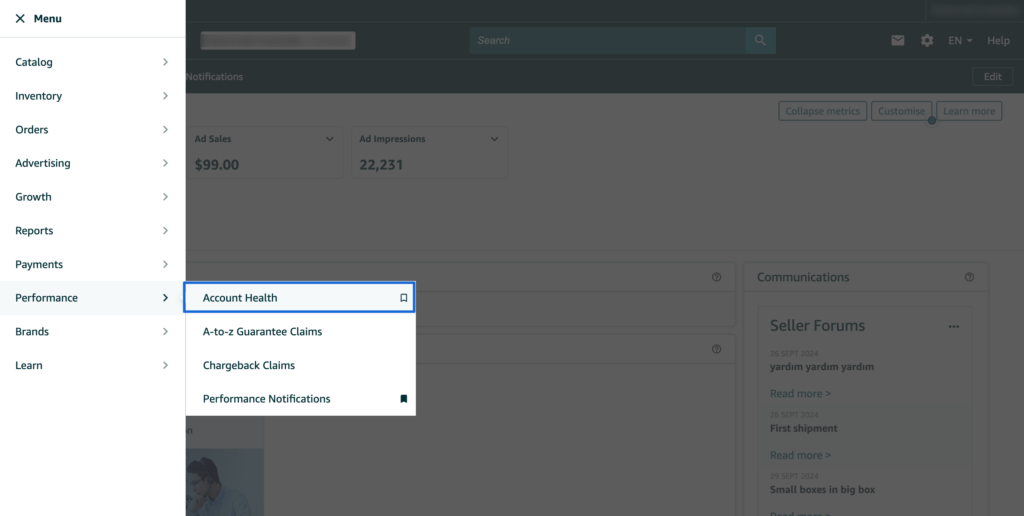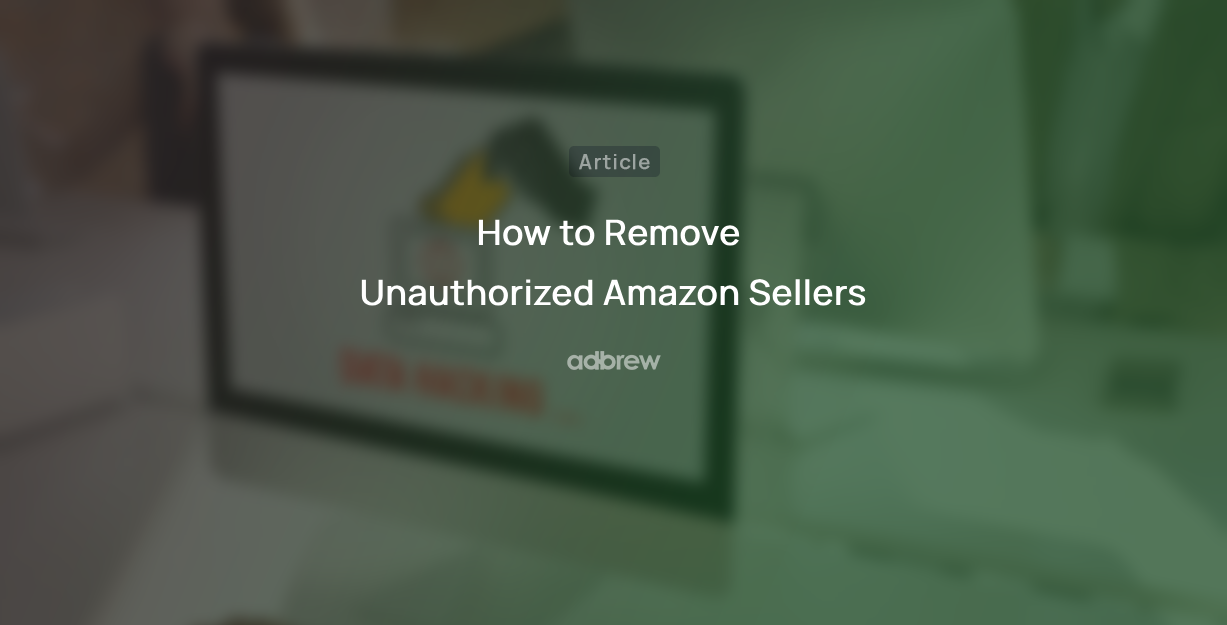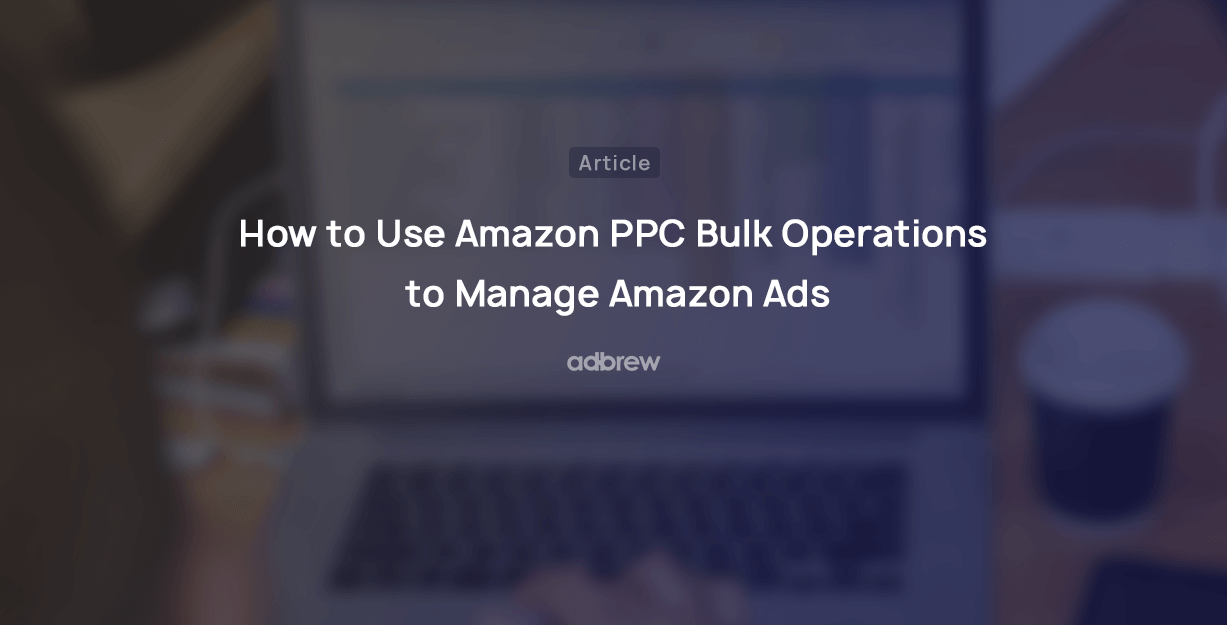
As an Amazon seller, providing the best customer service is paramount to maintaining a positive customer experience. One key metric that directly impacts your seller health is the Amazon Order Defect Rate (ODR).
In this comprehensive guide, we’ll delve into the intricacies of Amazon’s ODR, exploring its components, potential causes, and effective strategies to improve your score.
What is the Order Defect Rate in Amazon?
First things First, ODR is a negative parameter. Amazon uses the order defect rate as a metric to gauge the customer experience offered and maintained by sellers on its marketplace.
Order defect rate (ODR) determines how unsatisfied customers are with your product and service. By any means, if customers feel unsatisfied with an order, that order is counted in ODR.
A higher ODR indicates lower customer satisfaction. Both are inversely proportional.
What Are the Factors That Impact Order Defect Rate?
- Inventory Management: Insufficient stock levels can lead to late shipments, a common cause of ODR. Effective inventory management, including accurate forecasting and timely replenishment, is crucial to avoid stockouts and ensure timely delivery.
- Product Quality and Accuracy: Product discrepancies, such as damaged or incorrect items, can significantly impact ODR. Ensuring high-quality products and accurate order fulfillment is essential to minimize these issues.
- Shipping and Logistics: Late shipments, lost or damaged packages, and carrier delays can all contribute to a higher ODR. Reliable shipping partners and efficient logistics processes are vital for timely and accurate deliveries.
- Negative Feedback: Negative feedback is a significant component of ODR. It occurs when a customer leaves a negative review on a seller’s product page. Negative feedback can be a result of poor customer service, defective products, or inaccurate product descriptions. Sellers must address negative feedback promptly and take corrective measures to prevent future occurrences. A high number of negative feedback can negatively impact a seller’s ODR and potentially lead to account suspension or termination.
- Packaging and Handling: Inadequate packaging can result in damaged products during shipping, leading to product discrepancies and customer dissatisfaction. Proper packaging and careful handling can help prevent damage and reduce ODR.
- A-to-Z Guarantee Claims: A-to-Z Guarantee claims are a critical component of ODR. These claims occur when a customer receives a defective or incorrect order, and Amazon provides a guarantee to protect the customer. Sellers must strive to minimize A-to-Z claims by providing accurate product descriptions, ensuring timely shipping, and offering excellent customer service. A high number of A-to-Z claims can negatively impact a seller’s ODR and potentially lead to account suspension or termination.
- Seller Communication: Clear and timely communication with customers regarding order status, shipping updates, and any potential issues can help prevent misunderstandings and reduce ODR.
- Credit Card Chargeback: Credit card chargebacks are another component of ODR. A chargeback occurs when a customer disputes a charge on their credit card, and the bank reverses the transaction. This can happen if a customer is not satisfied with their purchase or if they experience poor customer service. Sellers must take proactive measures to prevent chargebacks by providing clear product descriptions, ensuring timely refunds, and offering excellent customer service.
How to Calculate Amazon Order Defect Rate
ODR= (Defective Orders/ Total orders Received) x 100
Breaking Down the Components:
- Number of Defective Orders: This includes orders that have experienced:
- Late shipments
- Product discrepancies (e.g., wrong item, damaged product)
- Customer service issues (e.g., negative feedback, A-to-Z claims)
- Total Number of Orders: This is the total number of orders you’ve received during a specific period.
How Does the Order Defect Rate Affect Seller Account Health?
Amazon’s website states: “An ODR above 1% may result in account deactivation.”
The Order Defect Rate (ODR) directly impacts the health of a seller’s account. Here are a few areas that can be affected by a high ODR:
Buy Box Eligibility
A high ODR significantly reduces the chances of winning the Buy Box. Only top-performing sellers are eligible, as Amazon prioritizes excellent customer service. Therefore, a high ODR disqualifies a seller from benefiting from the visibility and higher sales associated with the Buy Box.
Seller Reputation
Although ODR is not visible to buyers, a lack of positive reviews, Buy Box wins, and other features on a product listing can damage a seller’s reputation and deter potential customers. A product is often the only representation of a seller’s identity, and listings with high positive ratings (which are less likely with a high ODR) are more appealing and boost a seller’s reputation.
Visibility and Ranking
Amazon does not compromise on customer service, so sellers with a high ODR often experience lower customer satisfaction and reduced product visibility. To maintain marketplace quality, Amazon may deactivate a listing or lower its visibility, leading to poor search rankings.
Offers and Promotions
Amazon may limit selling privileges, such as offering discounts or running promotions, for sellers with a high ODR. This can restrict their ability to leverage certain sales-driving features on the platform.
It’s important to note that Amazon thoroughly investigates order defect reports. Sellers are not penalized for false claims made by buyers. An order is considered defective only when it results from seller negligence.7 Ways to Improve the Amazon Order Defect Rate.
7 Ways to Improve Order Defect Rate on Amazon?

1. Respond to Negative Feedback
Did you know that negative feedback can be removed from an Amazon product listing? Customers can revise or convert their negative feedback into positive feedback with minimal effort from the seller’s side.
This is possible when sellers promptly respond to feedback, offer solutions or discounts, and convince the customer. Ignoring negative reviews is not an option if you want to maintain good relations with both customers and Amazon.
Customers can only file an A-to-Z claim when sellers fail to respond to their inquiries in a timely manner. So, handle issues before they escalate to Amazon.
2. Get Negative feedback Removed by Amazon
Sellers can request Amazon to remove feedback if it was mistakenly related to the product instead of seller performance.
Many customers confuse product reviews with seller feedback. Product reviews should be specific to the product, while feedback relates to the seller’s performance.
For example, if a customer disliked the product but was satisfied with timely delivery, packaging, and customer service, they may leave negative feedback on the seller by mistake. In such cases, sellers can contact Amazon support to have the feedback removed.
3 . Offer Fast and Free shipping
Late deliveries are a major contributor to ODR (Order Defect Rate). Customers receiving late orders may file an A-to-Z claim or leave a negative review.
For sellers using FBM (Fulfilled by Merchant), timely delivery should be a top priority. Offering free shipping can also give you a competitive edge, as customers love free delivery.
4. Optimize Fulfillment During Holidays
The holiday season brings a surge in orders, making it challenging to manage fulfillment smoothly. This can lead to delays and unhappy customers.
To avoid this, stock up early—at least a few weeks before the season begins—and ensure you have enough inventory. Delegate tasks to a team for efficient order processing, and automate repetitive tasks to save time.
5. Choose Durable Packaging
Long-distance shipments can damage products, even if they leave your warehouse in perfect condition. Customers receiving damaged items will likely return them and leave negative reviews.
Some sellers use low-quality packaging to save on shipping costs, but this can backfire. Lightweight, durable packaging materials like bubble wrap offer a balance of protection and cost-efficiency. Don’t skimp on packaging for delicate items like glass or plastic—it may increase your ODR.
6. Review Product Details
A high return rate also impacts ODR. Customer satisfaction is crucial, as customers return products when they don’t meet their expectations, which are often set by product listings. Make sure your product descriptions are accurate and up to date.
Providing clear and honest information ensures that customers receive what they expect, leading to fewer returns and a better overall experience.
7. Opt for FBA (Fulfillment by Amazon)
FBA is a popular option for sellers because it reduces their workload. FBA sellers don’t face issues like late shipments or shipping damage penalties, and Amazon handles customer service inquiries.
If a defective order is caused by Amazon, they will remove negative feedback once the seller appeals. FBM sellers often face higher ODR rates because they manage everything themselves.
How do I check My Amazon Order Defect Rate (ODR)?
Amazon’s Order Defect Rate can be checked through Seller Central by following these steps:
- On the Seller Central dashboard, navigate to the Performance tab in the main menu.
- From the drop-down, select Account Health.

3. Your Order Defect Rate will be displayed under the Customer Service Performance section on the Account Health page.

What If My Account Is Suspended Due to High ODR?
Amazon provides sellers with 17 days to analyze and resolve ODR issues before final suspension. If your Amazon seller account is suspended due to a high ODR, you can appeal to Amazon for reactivation.
Amazon allows sellers to return with a strong ‘Plan of Action’ (POA). You can access the appeal option within Seller Central next to the suspension notice. Here are three steps to consider when writing a Plan of Action:
Express Concern and Politeness in the Plan of Action
There are many guides available on how to write a solid Plan of Action because its quality is crucial for sellers.
A well-crafted POA should apologize to Amazon for negatively impacting the customer experience on its marketplace while showing your determination to continue selling responsibly.
Be very polite when writing your POA. Expressing genuine concern and politeness helps convince Amazon to reconsider. You can use phrases like “We humbly request,” “We apologize,” or “We take this matter very seriously.”
Provide Documents as Proof
Your statement in the Plan of Action must be backed by proof. Include legitimate documents related to your products that Amazon requires for reactivation.
These documents may include invoices from your supplier or an authorization letter if you are a reseller. Ensure the invoices were issued within the last 365 days and have clear, visible dates. Also, the ASINs should be listed on the invoices.
Conclusion
Maintaining a low Order Defect Rate is essential for long-term success on Amazon. It not only ensures your account remains in good standing but also helps build trust with your customers, leading to better reviews and higher sales. By actively managing customer feedback, optimizing shipping processes, using durable packaging, and staying on top of product details, you can significantly reduce your ODR.
FAQ: Amazon Order Defect Rate
- What is Amazon’s Order Defect Rate (ODR)?
Amazon’s Order Defect Rate (ODR) is a performance metric that measures the percentage of orders with defects, such as negative feedback, A-to-z Guarantee claims, or service credit card chargebacks, over a specific period. Maintaining an ODR below 1% is crucial for sellers to ensure account health and continued selling privileges.
2. How is the Order Defect Rate calculated?
The ODR is calculated by dividing the number of orders with defects by the total number of orders within a given time frame, typically a 60-day period. The formula is:
ODR=(Total Number of OrdersNumber of Defective Orders)×100
For example, if you have 5 defective orders out of 500 total orders, your ODR would be 1%.
3. What factors contribute to a high ODR?
Several factors can increase your ODR, including:
Negative customer feedback (ratings of 1 or 2 stars).
A-to-z Guarantee claims filed by customers due to issues like late deliveries or products not matching descriptions.
Service credit card chargebacks initiated by customers disputing transactions.
Addressing these areas proactively can help maintain a low ODR.
4. What are the consequences of a high ODR?
If your ODR exceeds 1%, Amazon may take actions such as:
Suspending or terminating your selling account.
Removing your eligibility for the Buy Box, which can significantly impact sales.
Imposing restrictions on your selling privileges.
Maintaining an ODR below 1% is essential to avoid these penalties.
5. How can I improve my Order Defect Rate?
To reduce your ODR, consider the following strategies:
Ensure timely and accurate shipping: Ship orders promptly and provide accurate tracking information to customers.
Maintain accurate product listings: Ensure that product descriptions, images, and details are accurate to meet customer expectations.
Provide excellent customer service: Respond promptly to customer inquiries and resolve issues efficiently.
Monitor and address negative feedback: Regularly review customer feedback and take corrective actions to prevent recurring issues.
Use Fulfillment by Amazon (FBA): Leveraging FBA can help ensure reliable shipping and handling, potentially reducing defects related to fulfillment.
Recent Posts
Take your Amazon PPC advertising to the next level

Related Blogs
Running Amazon ads with an empty shelf? You might as well be burning cash. Many sellers focus on optimizing bids, […]
In today’s competitive digital landscape, growing your eCommerce brand requires more than just a standalone website or a single marketplace […]
Are you an Amazon seller looking to offload excess inventory or seasonal items? The Amazon Outlet program might be just […]
Turning your bookshelf into a source of income has never been easier, thanks to Amazon. If you have books collecting […]
If you’re an Amazon seller, encountering an account suspension or policy violation can be a significant setback. But with the […]
Introduction Amazon dropshipping is an increasingly popular way to run an e-commerce business without the need to store or ship […]
Introduction The Amazon Influencer Program is a great way for content creators to turn their influence into earnings. This program […]
Introduction Amazon Kindle Direct Publishing (KDP) is a platform that allows authors to self-publish their work as ebooks or print […]
Selling on Amazon offers many opportunities for businesses, but it’s essential to understand the costs involved with Fulfillment by Amazon […]
Walmart is quickly becoming a popular platform for brands and sellers to connect with more customers. One way to boost […]
In today’s competitive retail landscape, reaching the right audience at the right time is crucial for success. Walmart’s Demand Side […]
In today’s fast-paced eCommerce landscape, shoppers demand speedy delivery. Walmart has responded by offering 2-day shipping, giving sellers on the […]
Running successful Walmart advertising campaigns takes more than just setting them up—it requires ongoing optimization. A Walmart PPC (Pay-Per-Click) audit […]
Are you ready to tap into the massive potential of Walmart Marketplace? With millions of daily visitors and a loyal […]
In the world of e-commerce, Amazon and Walmart reign supreme, dominating the retail landscape. These two giants offer vast opportunities […]
Are you a brand owner struggling to maintain control over your products on Walmart? The Walmart Brand Portal is here […]
Are you dreaming of a passive income stream from your Walmart store? The allure of an automated Walmart store with […]
Are you a seller looking to tap into the massive market of private-label brands? Walmart, one of the world’s largest […]
Tired of your Walmart products getting lost in the shuffle? In this blog post, we’ll dive into the essential strategies […]
Ever wondered why some Amazon sellers seem to have a magic touch with product bundles? It’s not luck—it’s strategy. Bundling […]
If you’re a Walmart seller looking to grow your business through retail media, Walmart Connect could be a game-changer. But […]
If you’re an Amazon seller, you may have noticed a portion of your inventory marked as “reserved” without knowing exactly […]
Have you ever wondered what managing your own Amazon orders is like? Switching from Fulfilled by Amazon (FBA) to Fulfilled […]
Walmart Marketplace offers an exciting opportunity for sellers to reach a vast audience by listing their products on Walmart’s platform. […]
Selling products on online marketplaces has become a vital strategy for businesses to reach more customers. If you’re looking to […]
Are you a Walmart seller aiming to improve your visibility and sales? In this blog, we will explore Walmart SEO, […]
As an Amazon brand owner, maintaining control over your product listings is essential to protect your brand’s reputation and customer […]
Improving your sales on Walmart starts with understanding how to consistently win the Buy Box. Securing this position can make […]
Are you an Amazon seller struggling to increase your rating? A high seller rating is crucial for attracting new customers […]
As an Amazon seller, providing the best customer service is paramount to maintaining a positive customer experience. One key metric […]
If you’re an Amazon seller and curious about Amazon IPI score and its impact on your business, this blog post […]
Introduction Starting an Amazon subscription box business presents a unique opportunity to tap into the growing trend of curated, recurring […]
Thinking about using Fulfillment by Amazon (FBA) to sell on the Amazon marketplace? Awesome! But before you box up your […]
Thinking about using Fulfillment by Amazon (FBA) to streamline your Amazon business? While FBA offers a convenient way to store […]
For FBA sellers, the Amazon Buy Box is the holy grail of product visibility. But with constant algorithm updates and […]
Have you ever wished you could offer customers pre-made packages of complementary products without the hassle of physically bundling them […]
Have you ever wanted to create a more branded and engaging presence for your products on Amazon? An Amazon storefront […]
Are you storing items on Amazon for a while? If so, it’s important to be aware of Amazon long term […]
When selling products on Amazon, it is crucial to follow their packaging requirements, rules, and guidelines. Proper packaging ensures that […]
Amazon A/B testing can significantly enhance your product listings and boost sales. This method, also known as split testing, involves […]
Have you ever browsed Amazon and stumbled upon a product with a little blue badge that reads “Amazon’s Choice“? It […]
Amazon FBA vs FBM needs to be explored, when we ship products and handle orders while selling on Amazon. With […]
Ever feel like you’re missing something in your Amazon PPC Search Terms report? You might be! Sure, they show what […]
Amazon can be a fantastic platform to reach new customers, but keeping your virtual shelves stocked can get tricky. That’s […]
Navigating Amazon as a new seller can be tough, but there are tools and programs available to help such as […]
Have you ever scrolled through an Amazon search result page and noticed product recommendations nestled alongside the standard listings? These […]
Finding time for yourself while selling on a competitive marketplace like Amazon can be challenging. As a seller, your main […]
Starting an E-commerce business has become quite easy with Amazon, but it also brings heavy competition. Millions of Amazon sellers […]
As an Amazon seller, you know the importance of getting your products seen. But with millions of listings, how do […]
Ever scrutinized an Amazon product page and noticed the cryptic “Sales Rank”? Wondering what it means and how it impacts […]
Millions of products compete for customer attention on Amazon’s search results page, making it tough for your brand to stand […]
Are you selling products on Amazon and looking to increase your sales? This blog is for you. We’ll share tips […]
Are you an Amazon seller looking to boost your brand visibility and profitability? Are you feeling stuck in the cycle […]
Ever wonder what drives your online shopping habits? Perhaps a captivating product description, or an eye-catching professional photo? As it […]
For any seller on Amazon, understanding the A9 algorithm is crucial for success. This complex algorithm dictates which products appear […]
Are you an Amazon seller looking to turn those single purchases into recurring revenue? Look no further than the Subscribe […]
Amazon has become a go-to platform for all e-commerce business owners to launch and scale their e-commerce brands online. But […]
Mother’s Day, a time to celebrate the incredible women who raised us, is a prime opportunity for Amazon sellers to […]
In the ever-competitive landscape of Amazon, ranking high in organic search results is crucial for driving sales. While you might […]
If you’ve ever found yourself scratching your head over Sessions and Pageviews on your Amazon business reports, you’re not alone. At […]
Amazon is a massive marketplace, attracting millions of customers with diverse needs, preferences, budgets, and mindsets for shopping. To effectively […]
With Amazon boasting over $575 billion in retail sales for 2023, it’s no wonder so many sellers flock to its […]
Advertising on Amazon through pay-per-click campaigns can significantly enhance product visibility and sales for sellers. However, mastering Amazon PPC, with […]
Have you heard of the terms copyright infringement and plagiarism? If so, then Amazon Brand gating won’t be unfamiliar to […]
If you are running ads on Amazon, you’ll come across a sea of data in your advertising console. But does […]
Have you heard of the terms copyright infringement and plagiarism? If so, then Amazon Brand gating won’t be unfamiliar to […]
In the fast-paced world of e-commerce, where shoppers are bombarded with choices, standing out on platforms like Amazon is paramount […]
Are you planning to start an Amazon FBA store? If so, you’ll encounter a unique term – FNSKU. This seemingly […]
As an Amazon seller, you understand the power of reviews. They’re the lifeblood of trust and conversion on the platform. […]
Are you struggling to get Amazon reviews on your product? Well, you are not alone! Reviews are the backbone of […]
Are you tired of bland Amazon product listings failing to grab attention? In today’s competitive online marketplace, standing out is […]
As an Amazon seller, understanding how your brand performs throughout the customer journey is vital for success. However, until recently, […]
As an Amazon seller, optimizing your business and maximizing profits relies heavily on data analysis. One invaluable tool for gaining […]
Are you struggling to get noticed on Amazon’s massive platform? Do your products get lost in a sea of similar […]
For any Amazon seller getting into the world of sponsored advertising, understanding the Advertising Cost of Sale (ACoS) is crucial. […]
A well-executed Amazon product launch strategy can be the key to unlocking success and gaining a competitive edge. As the […]
In the ever-evolving landscape of e-commerce, distinguishing between keywords and search terms is vital for optimizing product visibility and driving […]
Ever felt like you are throwing darts in the dark when it comes to your marketing efforts outside Amazon for […]
Amazon, the e-commerce giant, has successfully concluded a robust business year with outstanding performance in quarter 4. The most recent […]
Picture this: you have a great product on Amazon, but it’s not selling well despite having attractive images and a […]
The advertising landscape is evolving, and viewers are rapidly migrating from traditional cable TV to streaming platforms. This presents a […]
Feeling lost in the Amazon discount jungle? Struggling to reach the right customers and entice them to make the purchase? […]
Are your products getting lost in the vast ocean of Amazon listings? Do you want them to stand out, rank higher, […]
For years, Amazon sellers were in the dark. They couldn’t see what keywords customers were using to find their products, […]
Selling on Amazon can be tough with so many others doing the same in your category. That’s why it’s super […]
For Amazon sellers, understanding their customers has often felt like navigating a maze without a map. The missing link? A […]
Have you ever felt like your Amazon advertising campaigns are lost in a tangled jungle of keywords? You’re not alone. […]
When did you last give your Amazon PPC account a checkup? Regular Amazon PPC audits are crucial to ensure the […]
Embarking on the path of online selling? If so, you’re likely aware that Amazon is your ultimate destination. With a […]
Ever felt like your product is lost in the vast Amazon jungle? You’re not alone. With millions of shoppers actively […]
Amazon Sellers selling on the Amazon marketplace usually utilize Amazon advertising without keeping a close eye on the TACoS metric. […]
The rush of Black Friday and Cyber Monday might be over, but the opportunity for continued sales growth extends beyond […]
In the fierce Amazon advertising domain, where competition rises and costs increase, understanding and keeping track of the right metrics […]
Have you ever felt the frustration of campaigns going out of budget, leading to missing out on potential sales, or, […]
Amazon PPC campaigns can be a powerful tool for driving traffic and sales to your products. However, without proper structure, they […]
Whether you are creating a new advertising campaign or optimizing existing ones, doing it manually from the Amazon ad console […]
Want to know what search terms people use to visit or purchase your product on Amazon? If yes, you’re in […]
When you are spending dollars or even more to get a click on your Amazon ads, you want to ensure […]
Are you an Amazon seller looking to maximize your profits and minimize your advertising costs? If so, you’re not alone. Many […]
Are you exclusively relying on traditional metrics such as CTR, CPC, CVR, or ROAS to make your campaign optimization decisions? […]
Navigating the ever-evolving landscape of Amazon’s online marketplace is essential for any seller looking to thrive on the platform. Among […]
As the holiday season approaches, businesses are gearing up for the highly anticipated Q4 rush. To ensure a successful Q4, […]
Do you regularly review your Amazon advertising reports? If not, you may be missing out on numerous opportunities. Amazon […]
Whether you’ve just launched a new product or have been selling on Amazon for a while, advertising on the platform […]
Amazon PPC bidding strategies that you choose play a significant role in the success of your Amazon Ads campaigns. As […]
Have you ever heard of a “catch-all campaign”? This single campaign can generate extra sales for you at a very […]
Amazon Prime Day is one of the largest global e-commerce sales events, attracting millions of customers worldwide. But how do […]
Are you looking to boost your brand’s visibility and drive more sales on Amazon? Look no further than Amazon Sponsored […]
Succeeding on Amazon in 2024 isn’t easy. Just listing your products and hoping for the best won’t work anymore. You […]
Are you bidding the same amount for all your ad placements on Amazon? If yes, then you’re missing out on […]
Whether you are looking to boost product discovery or target audiences further down the sales funnel who have already engaged […]
We, at Adbrew catalyze millions of dollars of ad spend monthly through our platform, with Sponsored Product Ads being the […]
Do you want to know how many clicks you should give a search term before adding it as negative in […]
Think of your product listing as a guiding light on the Amazon marketplace. It’s your chance to grab attention, tell […]
It is no longer a secret that shopping behavior on Amazon varies over the day. This is the reason why […]
Are you struggling to get the most out of your advertising budget on Amazon? Do you find that your campaigns […]
Ever run an Amazon Ad campaign and wondered why some sales weren’t directly linked to the products you advertised? That’s […]
If you’re managing Amazon PPC ads, it’s essential to have an effective and organized approach for target harvesting and movement. […]



























































































































